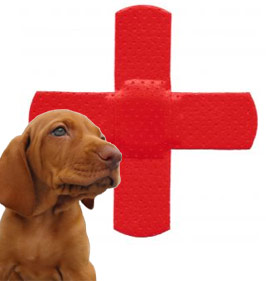Ugh, who else is struggling with their Facebook business page or social media stuff!? I…
14 Signs Your Pet May Need Immediate Attention and Care
 Picture this: you are caring for a client’s pet and notice a drastic change in its eating habits. Or the poor pooch has some sort of discharge oozing from her eye. Or worse yet, the dog is breathing in a way that can’t be good.
Picture this: you are caring for a client’s pet and notice a drastic change in its eating habits. Or the poor pooch has some sort of discharge oozing from her eye. Or worse yet, the dog is breathing in a way that can’t be good.
Something’s got to be done. And quick. What do you do? You remain calm, compose yourself and put your plan into action.
You do have a plan… don’t you?
When caring for a client’s pet, you’ll quickly get to know the animal’s personality. At minimum, you should be able to easily pick up on habits including:
- Eating habits (is it a grazer, or does it devour each meal within 30 seconds?)
- Bathroom habits (does it go in the mornings, or on every walk?)
- Play habits (does it love playing fetch or is your lap most appreciated?)
Getting to know every aspect of a pet’s personality will allow you to treat and give proper attention to any ailment. After all, our job as pet sitters is to give the best care possible to our client’s pets.
14 Signs To Watch For
Here then is a checklist of the 14 areas of focus to keep an eye on (please note this is only a partial list and should not be construed as exhaustive) recently put out by the Pet Industry Joint Advisory Counsel (PIJAC):
Evaluate for general signs of illness, disease or injury, including but not limited to:
- Abnormal condition or behavior (by species, age, and gender)
- Listlessness: Lacking energy or disinclined to exert effort; lethargic
- Failure to eat or decreased appetite
- Weight loss
- Diarrhea
- Eye or nasal discharge
- Conjunctivitis: Commonly called pink eye or madras eye
- Labored breathing
- Elevated respiration rate
- Cough
- Prostration: Placement of the body in a reverentially or submissively prone position
- Skin lesions
- Abnormal hair or feather loss
- Evidence of fleas, ticks or other parasites
What’s Your Plan?
At the end of the day, our job as pet sitter is to care for a client’s pet in a way that keeps it safe, healthy and secure.
A qualified pet sitter needs to know how to recognize and, perhaps most importantly, treat any of the ailments above. Educate yourself in pet illness, treatment and first aid. Learn how to recognize certain behaviors and have a plan for treatment.
If any situation rises out of control, make sure you have a vet’s phone number and location at the ready. A client should always provide you with emergency contact info but it’s of no value unless you use it.
Have emergency phone numbers handy for the client, a vet and animal poison control with you on a job at all times. The majority of pet deaths could be avoided if educated treatment was administered in a timely manner.
Work to become a superhero, rock star or lifesaver in your client’s eyes and you’ll be well on your way to a long, sustainable pet sitting business.



